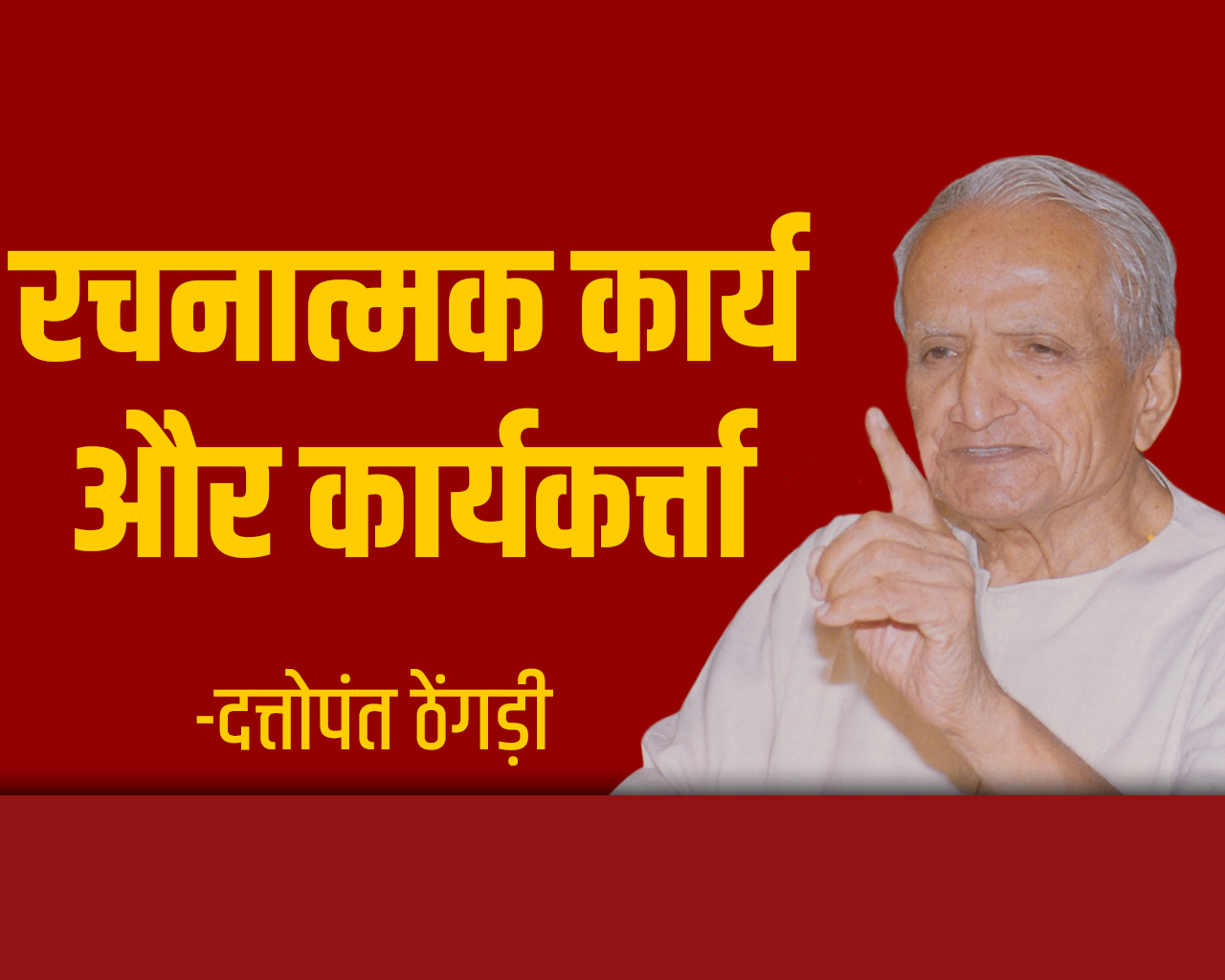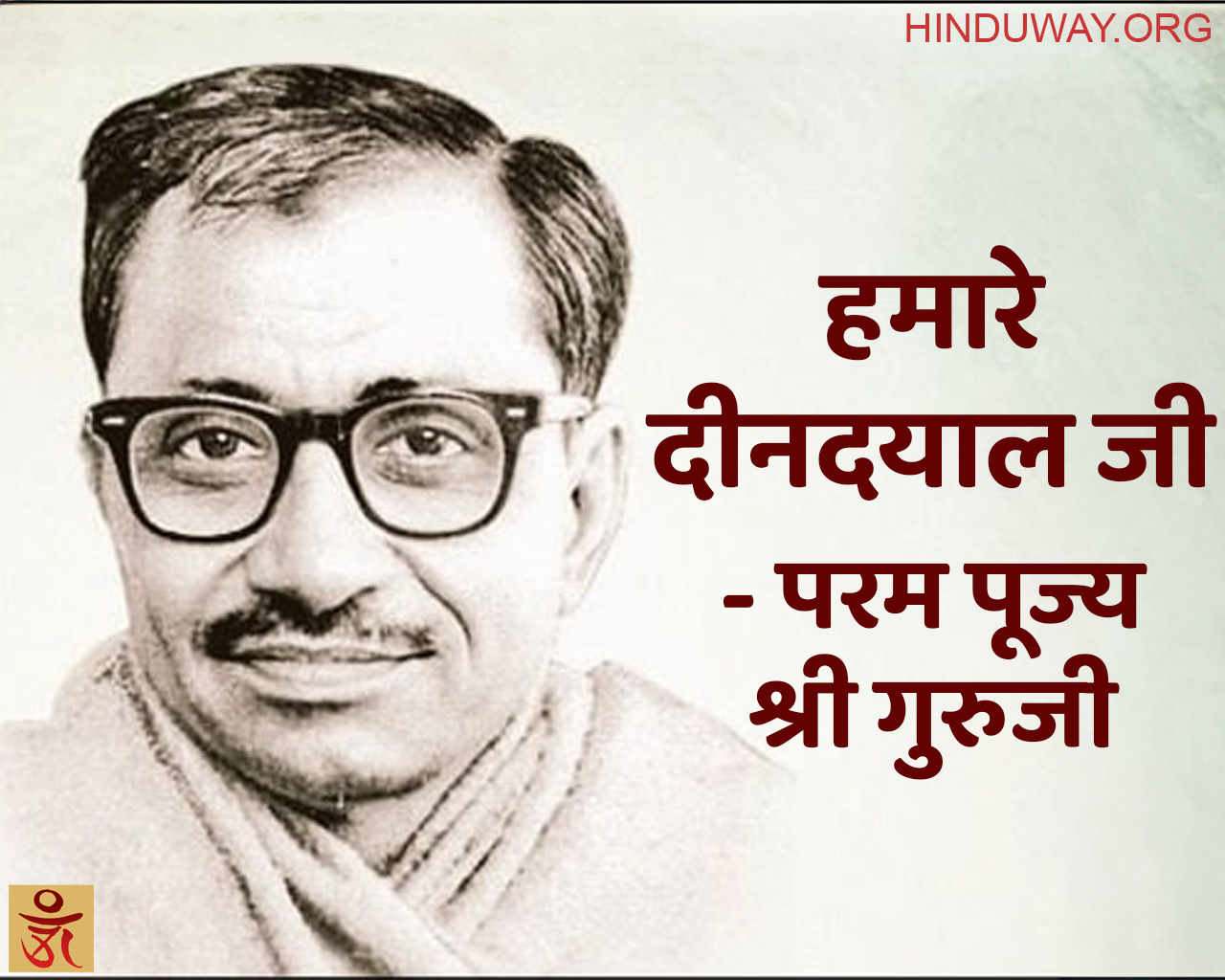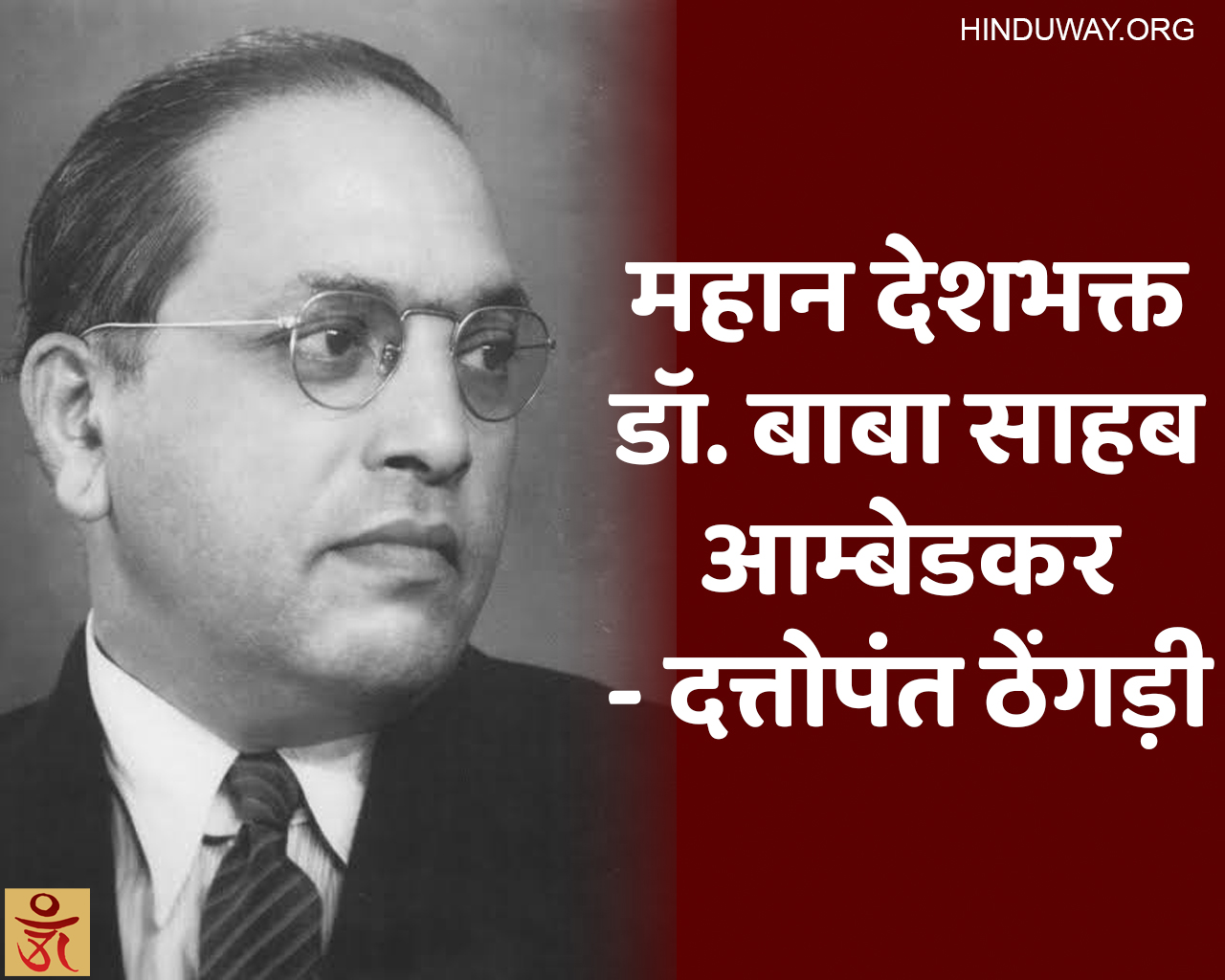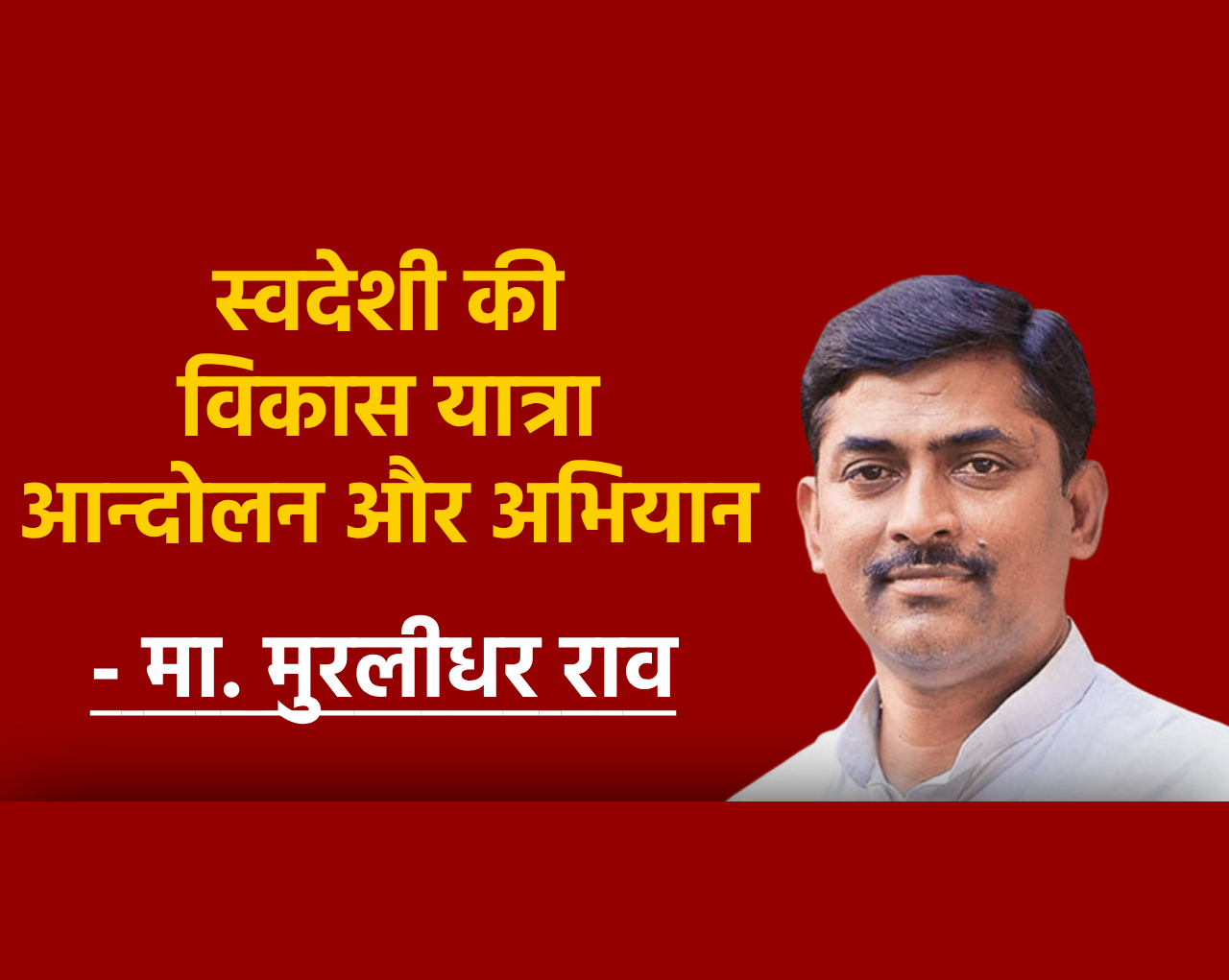THE so-called progressive’s in our country are very much carried away and impressed by the glamour of the western civilization. The scientific and technological advance of the West is certainly impressive. As a developing nation, it is our duty to study all the various aspects of their material advance and scrutinise them for the purpose of imitation, modification, adaptation or rejection.
But we cannot be oblivious of the fact that it is not possible to import or imitate foreign technology without imitating or importing simultaneously a part of the culture of the country or countries in which it was evolved. While accepting foreign techniques; methodology or technology, we will have to be careful to adapt them to our indigenous culture. Conscious efforts must be made to modify everything foreign so as to make it part and parcel of the native culture.
Homo-centricism of the West
Unlike Bharatiyns, the Westerners have come to cultivate the attitude of homo-centricism. Not merely that, while it goes to the credit of the West that it has produced a number of scientists and religions teachers who have risked their lives for the promotion of human welfare, it cannot be denied that an average Westerner has no time or mind to think of the welfare of distant posterity. He is incapable of long-range view of things. Whatever is immediately beneficial to him or his generation is accepted and implemented by him without caring for its long-range effects on the future of mankind.
For example, he has been continuously abusing his natural environment. He is revengingly exploiting natural resources. This has given the West an edge over the East. But it is also true that within less than a century and a half, we will have completely exhausted stocks of different fuels furnished by nature. Scientists today are leaning heavily upon the use of nuclear energy. But the world stock of uranium and thorium is not unlimited. How will this affect the welfare of future generation?
Mother Nature
The Hindus have always considered Nature as Mother. Even if they worship cow as mother and milk it, taking full precaution that sufficient quantity of milk should be left for the use of its calf and that it should not be bled to death in the process. They have also been particular to exploit natural resources for their own benefit, ensuring simultaneously that sufficient quantities would be left for the consumption of the posterity and that Mother Nature should not be want- only put to destruction. This deprived them of many immediate benefits, but the balance of Nature had been maintained.
Land, water and air are the free yet invaluable gifts of Nature, But the Western industrialisation has been tampering with all the three divine treasures.
Destruction of Land
The scientists have now come to realise that the reckless use of chemical pesticides has upset the balance of life in Nature, that the use of chemicals and other artificial substances has rendered the natural process of reproduction of oxygen and nitrogen, so essential for animal and plant life, defective and fitful, that excessive use of artificial fertilizers over a long period has denuded fertile lands of their capacity to produce any crop whatsoever, that excessive irrigation has resulted in salination of lands, and that progressive introduction of the process of deforestation, though immediately helpful, has in the long run, given rise to the problems of the advance of sandy deserts on a large scale.
Water pollution
Waters are also tampered with. Nearer home, the rivers and coastal waters of Japan are clogged to a dangerous extent with the industrial waste. The pure waters of Siberian region are polluted by the Soviet paper and other industries The waters of the Rhine river are contaminated to such an extent that neither fish nor any other species of life can survive therein over the length of hundreds of miles. A six-inch thick layer of oily discharges from factories has spread over the Rhine’s waters for not less than 200 miles from its mouth. In the United States, it is almost impossible to find a river or a lake which is not polluted by industrial waste or solid refuse, such as paper tin cans, cardboard wrappers, and other discarded items. The rivers of the U.S. are daily carrying away at least 2,000 tonnes of solid refuse.
Industrialisation has created a colossal problem of industrial waste. Such as discarded automobile bodies, millions of tones of scrap iron used and discarded glass bottles, tin-cans etc. Several methods, such as, incineration, conversion at the sources, recycling, etc. have not proved adequate to deal with the problem.
Air pollution
Air pollution constitutes a still more difficult and dangerous problem. In the air surrounding industrial centers more than 3,000 foreign chemicals have been identified, and the whole atmosphere is thick with such solid substances as lead-soot, ash, rubber-particles, asbestos, gases such as carbon monoxide and di oxide, Sulphur dioxide and different varieties of nitrogen oxides-all of them detrimental to human health, causing asthma, bronchitis, lung cancer and emphysema.
Tonnes of such pollutants in the air of industrial centers affect adversely the plant and the animal life, and even corrode buildings, machinery and roads. The ‘smog i.e., smoke plus fog, is becoming a nightmare to the motorised West. Even Japan, which is so cautious in imitating the West, has not escaped these evil effects of industrialisation, In certain areas of Tokyo, people are forced to use gas masks for protection from air pollution
Must we imitate?
In fact, Mr. Maurice Strong, who was assigned the task of organizing the UN Conference on Human Environment at Stockholm, had said that a tendency to link environment with the problems of the affluent countries only is wrong and that environment is equally a concern of the developing or rather the poor countries. It is a human problem affecting all the world, he observes.
Must we tread the same path, follow the same routine, of committing mistakes first and then trying to rectify them? In their indecent haste for speedy material advance, the Westerners totally ignored ecology, and now the wiser amongst them are repenting at leisure for this lapse, Must we, in the name of progressivism, become equally oblivious of the ecological factors? This question becomes all the more pertinent in view of the fact that the Hindus have their own distinct attitude towards the problem of milking Mother Nature.
This should serve as a warning against the indiscreet imitation of the West.
Measures
Even under the present stage of industrialisation, there should be enacted a prescribing measures for control of water and air pollution of different industrial cities and water pollution of major rivers, the extent of responsibility of every industrial establishment for such pollution, and the procedure to recover social costs of pollution from different industrial establishments.
Another subject deserving careful scrutiny in this context is that of appropriate technology.
Mass production techniques
The West has evolved and has a preference for the techniques of mass production. Communism as well as capitalism stand for these techniques. They give rise to capital-intensive, largescale industries. Maximum production with minimum number of working hands is the strategy of the West. Is it suited to Indian traditions, conditions and requirements?
True, our approach to this problem must be pragmatic. We cannot dismantle large scale industries that are already set up. Even in future planning, the technique of mass production will have to be adopted wherever the logic of economics makes it inevitable. And mechanisation must be accorded the place it rightly deserves in the new scheme of things.
Why small-scale industries
But it must be simultaneously realised that the expansion of a largescale industry is not necessarily the only form of industrialisation; that it is ‘Large’ production, and not merely ‘Largescale’ production, which gives both-increasing and a progressive downward shift in the cost curves; that these techniques are
incompatible with the expansion of employment opportunities, which is the supreme need of our national economy; that ‘mechanisation’ can assume variety of forms- some of them being drastically
different from the current Western pattern, and that a strong case for small industries has been made out by the fact that new technological developments like automatic machinery, synthetic alloys, die-casting, small-scale precision instruments and the developments in power distribution have reduced the technological disadvantages of a small-scale production. “
Lopsided planning
Heavy plants imposed upon, but not integrated with the rest of the economy, production of capital goods not correlated with that of consumer goods, industrial sector running parallel to, but not coordinated with agricultural sector, processes of decapitalisation, dis-employment, etc. initiated because of the lack of full and comprehensive consideration of the seven M’s i.e. men, material, money, machinery, management, motive power and market; introduction of foreign technology which, under Indian conditions, aggravates the problems of unemployment and simultaneously, creates the problem of idle capacity, all these present a picture of the lopsided industrial planning, not suited to the optimum utilisation of available resources and fulfilment of national requirements.
Bharatiya technology
In future planning it is necessary to lay greater stress upon the evolution of characteristically Bharatiya technology which would facilitate decentralisation of the processes of production with the help of power converting home, instead of factory into center of production.
The new techniques should cause minimum possible decapitalisation of our means of production. Our artisans should not find it too difficult to switch over from the traditional to the new technique. The available skill competent to manage small-scale industries should not be rendered useless under the new system. Small investors should not be denied opportunities of investment.
The new technology should make us self-reliant and put an end to our dependence on foreign countries for machinery, spare parts, capital, technician etc. Wherever inevitable, large scale industries will have to be set up. But priority should be given to the decentralised processes of production that can bridge the gulf between the rural and the urban India, bring about greater coordination between agriculture and industry, and make the largescale and the small-scale industries mutually complementary.
Role of our Technologists
For this purpose, our technologists must study thoroughly and assimilate industrial technology all over the world locate and introduce such parts of foreign technology as are suited to Indian conditions and devise for the benefit of artisans, reasonably adaptable changes in the traditional techniques of production, without incurring the risk of in crease in unemployment, wastage of the available managerial and technical skill, and complete decapitalisation of the existing means of production.
The main hurdle in this respect is the mental slavery of our leaders. We do not appreciate any technology which is not imported. That is why even the idea of an intermediate Technology initiated by Dr. Schumacher was not received with the seriousness it deserved. The technology that should reconcile optimum utilisation of available capital and Labour with the economic facts of capital scarcity and huge unemployment, the technology that would increase the employment potential of each rupee of industrial investment by one hundred times without increasing cost per unit of output, that was what the British economist pleaded for.
Intermediate Technology
The intermediate technology, according to him, should be capable of reconciling growth in employment with industrial efficiency. For this purpose, it was necessary to conduct research in certain aspects of the problem. For example, in how many cases it would be feasible to scale down the size of plants without reducing their efficiency? How far it is practicable, on the strength of such technology, to reduce the number of migrants from villages to cities? Will it be possible, on this basis, to locate new industries in small towns and villages, utilising local capital, local labour, local raw materials, local managerial skills, and local entrepreneurial talent? Can such industries become self-supporting with the help of efficient marketing organisation, provision of appropriate infrastructure and revival of the spirit of Swadeshi ? Is it practicable and advisable to have fresh spatial planning?
It is advisable to select, in the first place a few specific industries, such as leather, ceramics etc. for this purpose and assess probable impact of intermediate technology upon their future. This study can open new avenues, offer fresh stimuli, and pave the way for the development of characteristically indigenous technology appropriate to particular factor endowment of our economy, though it is true that the quantum of capital per employed worker cannot be the same in all branches of production
and even within the same industry, no single technology in the sense of one single capital-labour ration may rule profitably. Different levels of technology may rule side by side. But the emphasis must be on the development and progressive utilisation of Bharatiya technology, with the object of securing an increase in employment at rising levels of incomes.
Bane of urbanisation
The development of indigenous technology is important not only from the economic point of view but the survival and growth of our culture is also integrally connected with this problem. It is not as if any culture can thrive in vacuum, with no reference to the existing socio-economic structure which, in its turn, is largely conditioned by the techniques of production. Foreign technology can never come alone; it comes along with culture patterns of the country of its origin. We have experienced this in case of the techniques of mass production imported from the West.
These techniques have resulted in the concentration of capital and labour force in the urban areas, disturbing thereby the traditional joint-family system and autonomeus village life. The rapid urba- nisation has created problems which are cultural as well as social and economic in character.
Preservation and promotion of Bhartiya cultural value could be possible in the past because of the preservation and promotion of family atmosphere on three different level of hereditary family, Industrial or occupational family and regional family.
Once the process of urbanisation is set afoot, hereditary family in rural areas are disrupted and organisation of healthy family unit in the industrial areas becomes extremely difficult. Consequently, the samskaras that could be imparted in normal course through family life are no longer being transmitted from generation to generation in the new industrial environment. The old system is discontinued, and no new system has yet been evolved, which could fulfil the same purpose. Traditional, occupational or industrial families have already lost the essence of their existence.
Traditional Industrial Families
There is no industrial or occupational family today either in the rural or the urban areas. But it is, nevertheless, true that the survival of our culture depended to a very great extent upon the socio-economic structure of which occupational or industrial families constituted an integral part. Here again, we are confronted with the situation of ‘unborn tomorrow and dead yesterday.’ Our regional units constituted regional families comprising all hereditary families within the same area. All the three organisms enjoyed autonomy at their respective levels. The hereditary joint family was completely free to determine the rules and regulations for its internal administration. Every industrial family consisted of all the individuals connected with production, distribution or exchange of any commodity or service. For the purpose of internal management, the industrial family had complete autonomy. The family life on village or pargana level was also autonomous.
To be sure, all these three organisms had their own discipline not contradictory with one another within the frame work of national discipline. Every organism enjoyed full autonomy regarding its own internal administration but was subservient to the discipline of higher organism in matters within the jurisdiction of the latter. These three units constituted the basis of Bharatiya socio-economic structure. The mass production technology, as our experience so far shows, is not all conducive to the survival of all the three.
Needed: New Techniques
It is, therefore, imperative that, in the first place, new techniques of production should be devised which would help maintaining these social organisms intact and secondly, new measures should be devised to revitalise these organisms in the industrial areas which have adopted the mass production techniques.
| साभार संदर्भ |
| Manthan special 1980 |











